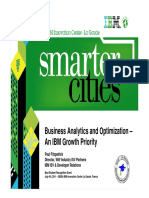0% found this document useful (0 votes)
21 views3 pagesUnderstanding Etherum Explainantion
The document provides an overview of Ethereum, highlighting its distinction from Ether, the significance of smart contracts, and the transition from Proof of Work to Proof of Stake in Ethereum 2.0. It discusses Ethereum's role in decentralized finance, the benefits and challenges of its ecosystem, and the impact of sharding on scalability. Additionally, it addresses the environmental improvements achieved through the shift to a more energy-efficient consensus mechanism.
Uploaded by
Malk MohamedCopyright
© © All Rights Reserved
We take content rights seriously. If you suspect this is your content, claim it here.
Available Formats
Download as PDF, TXT or read online on Scribd
0% found this document useful (0 votes)
21 views3 pagesUnderstanding Etherum Explainantion
The document provides an overview of Ethereum, highlighting its distinction from Ether, the significance of smart contracts, and the transition from Proof of Work to Proof of Stake in Ethereum 2.0. It discusses Ethereum's role in decentralized finance, the benefits and challenges of its ecosystem, and the impact of sharding on scalability. Additionally, it addresses the environmental improvements achieved through the shift to a more energy-efficient consensus mechanism.
Uploaded by
Malk MohamedCopyright
© © All Rights Reserved
We take content rights seriously. If you suspect this is your content, claim it here.
Available Formats
Download as PDF, TXT or read online on Scribd
/ 3



















































































